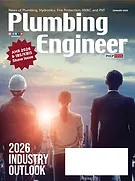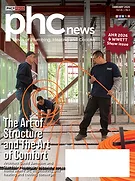The woman I’m dating lives on the waterfront in Newport Beach, SoCal. Her unit faces a marina that separates Newport Beach from Balboa Island, for those familiar with the area. This location is ideal for water sports such as stand up paddle boarding (SUP), and she is a super SUPer. She has a collection of paddle boards of various shapes, sizes and materials, two of which are called inflatables.
Inflatable paddle boards are quite high-tech. They are far from the blow-up air mattress you might be picturing in your mind. The boards require 18 psi of compressed air to give them the necessary structure, rigidity and buoyancy. Obviously, these boards cannot be inflated with your lungs.
The board has a specially design inlet valve called a Halkey-Roberts (HR) valve frequently used in marine applications. Inflation with this valve requires a special compressor (sold separately) that is designed to be powered from a car battery. The theory is obviously that if you need to inflate your SUP board you will likely not have 120V power at hand, but you would have your car and its battery nearby. Fair enough.
The problem with this theory in the case of my g-f is that her paddle boards are in her side yard, close to the water where they are used, and taking them to her car to add air requires quite a trip. The boards have to be carried through the house, around corners and through doors. At 12 feet long, they are awkward and fairly heavy. The odds are high that you will knock something over or damage some artwork. As a result, when we met she hadn’t added air to her boards for a year, and they were starting to get a little soft.
Being chivalrous, I volunteered to carry the boards through her house and community out to where the garages were located. She was thankful for this offer, although we never got around to it.
I asked why she didn’t buy a compressor with a 120V plug-in connection, and she said it didn’t exist. I found that hard to believe but she replied, “Trust me, it doesn’t exist on Google or Amazon, and if it doesn’t exist there, it doesn’t exist. Period.” I checked. She was right.
While my g-f was on vacation I came up with an idea — instead of bringing the boards to the car, I would bring the car to the boards. Well, not the car, but the battery. Taking a battery out of a car is a pain; it’s dirty, and it interrupts many of the car’s memory features. So I went to Pep Boys to purchase one.
While I was there I realized I could purchase a compact motorcycle battery rather than a car battery — it would be much lighter and easier for her to move around. I feared that it might not have enough amperage to run the compressor, but I decided to give it a try. I also bought a light-duty trickle charger, since I knew the battery would rarely be used, and it would die in the interim.
When I gave her the battery in a gift bag, she was understandably confused. I told her it was a box of diamonds. When she pulled out the battery she remained confused, until I told her it was for the SUP boards, and she got it right away.
We put it to the test and discovered that the first board we went to pump up had only 6 psi inside— one third of the intended pressure. It was long past due for supplemental air. The battery ran the compressor perfectly, but the board needed so much air that the small battery died at 13 psi.
The trickle charger recharged the battery in two hours, and the second charge brought it up to 18 psi. Bingo! The second board was not quite as flat with 13 psi. Another charge brought that one up to 18 psi in one charge. Going forward, since adding air is now easy as pie, the boards will never get so low in air that a single battery charge will suffice to return them both to design pressure.
Of course, I have started to learn SUP and my first two attempts were a bit shaky, but that was prior to inflating the boards to 18 psi, and I may have been on the 6 psi board, which would make stability much harder. I am excited to try it again on the re-inflated board to see if it is easier.
The real intent of this article is just to give an example of thinking outside the box. When a problem seems challenging there is often a simpler solution if you approach the problem from a different and less obvious angle.
Timothy Allinson, P.E., LEED AP, is vice president of Engineering at Murray Co., Mechanical Contractors, in Long Beach, California. He holds a BSME from Tufts University and an MBA from New York University. He is a professional engineer licensed in both mechanical and fire protection engineering in various states, and is a LEED accredited professional. Allinson is a past president of ASPE, both the New York and Orange County chapters. He can be reached at [email protected].





